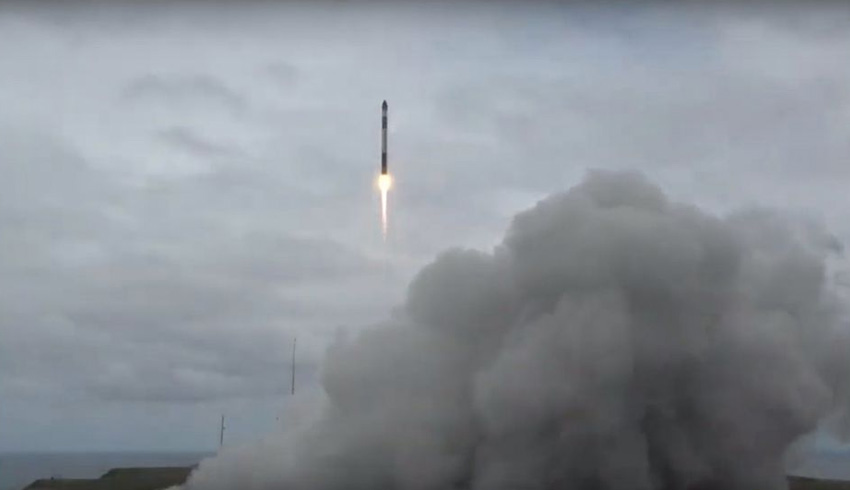
That successfully placed seven payloads in orbit and also conducted an important test of the technology Rocket Lab plans to use to recover and reuse its rocket first stages.
Rocket Lab didn’t actually aim to recover the first stage this time but it likely will on the next launch next year.
Following the launch, Rocket Lab founder and chief executive Peter Beck tweeted that the Electron first stage performed better than expected, surviving a guided high-speed plunge back through atmosphere.
Beck compared that to hitting a wall.
“Electron made it through wall! Solid telemetry all the way to sea level with a healthy stage. A massive step for recovery!!” he tweeted.
“Not only is this 10th mission a significant milestone launch for us, but our first guided stage re-entry was a complete success,” Beck said in a later statement.
“The stage made it through the harsh re-entry environment intact, which is an outstanding result for a first test of our recovery systems. It’s a huge testament to the relentless drive and commitment of our team that we’ve reached 10 flights in just our second year of commercial launches.”
This launch, titled “Running out of Fingers”, was the sixth this year. Rocket Lab plans to use recovered rocket first stages to increase its launch rate.
On future launches the rocket will descend by parachute and be recovered by a helicopter.
A successful recovery would make Rocket Lab the second space company to recover and reuse its booster stages.
Elon Musk’s SpaceX first recovered a booster stage from its Falcon 9 rocket in 2015 and made its first launch using a recovered booster in 2017.
For recovery, SpaceX uses cold gas thrusters to orient the rocket first stages, then reignites an element of the Falcon 9 Merlin engines to perform a propulsive landing on a drone ship.
Rocket Lab also plans to use cold gas thrusters but is taking a different approach for recovery.
This is a very considerable technical challenge as the rocket booster is returning from the edge of space and, at separation, travelling at thousands of kilometres an hour.
Of the latest Rocket Lab payloads, the most intriguing was the Japanese Astro Live Experiences micro-satellite, which will release hundreds of two-centimetre pellets to fall into the atmosphere, creating an artificial meteor shower likely to be visible to millions.
This would appear to be a very expensive way to create what is essentially a fireworks display.
The company hasn’t said when it will stage its show but one possibility is the 2020 Olympics in Tokyo.
Receive the latest developments and updates on Australia’s space industry direct to your inbox. Subscribe today to Space Connect here.












